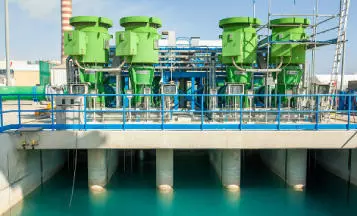Seawater desalination is an effective way of combating water stress in arid coastal regions. It is a solution with great potential, considering that 40% of the world’s population live within 100 km of the sea, and 25% within 25 km. Desalination is also a suitable means of providing drinking water in areas where natural water resources are subject to salinization: river estuaries, inland brackish or underground water.
Almost 300 million people around the world rely on seawater desalination, according to the International Desalination Association (IDA).

Desalination raises issues of public health, resilience and adaptation to the effects of climate change, regional dynamism and even economic development. Today, it is essentially a municipal market. However, more and more industrial companies are turning to these technologies, even if the capacity of these plants is still lower than that of plants designed to produce drinking water.
How do we desalinate seawater?
With a total treatment capacity of around 13 million m3 of water daily, at more than 2,300 sites in 44 countries across the world, we are the world leader in desalination. We support municipalities and industries all over the world in implementing desalination strategies, which we are the only ones in the world to master.
Once extracted, seawater undergoes several stages of pretreatment prior to desalination. We offer two types of technology:
- desalination by distillation: salts and water are separated by several evaporation cycles. This is also known as thermal desalination;
- membrane desalination: filtration is carried out by reverse osmosis, which involves pushing water under high pressure through a membrane that retains up to 95% of salt particles and 99% of impurities.
We can combine these two processes to create hybrid installations. The desalinated water then undergoes various post-treatment phases where it is demineralized and disinfected.


